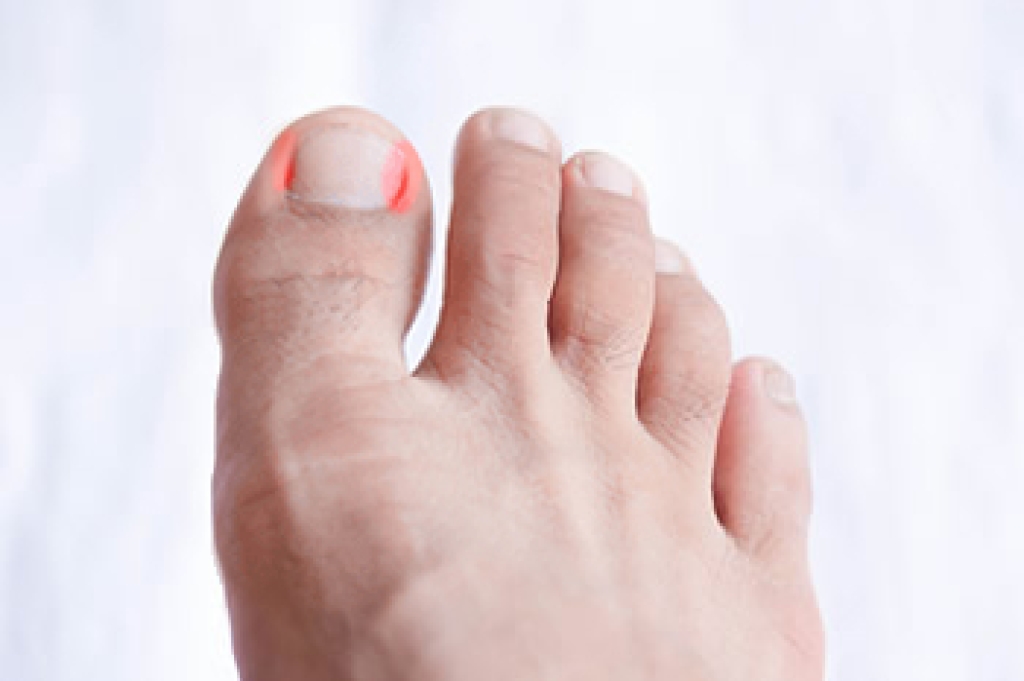
Ingrown toenails often start as a small nuisance but can quickly become painful and inflamed. This happens when the edge of a toenail begins to press into the surrounding skin, commonly on the big toe. Wearing tight shoes, poor grooming habits, and nail injuries are frequent causes. In some cases, there may be redness, swelling, or even drainage from the affected area. Early treatment may involve soaking the foot, keeping the area clean, and using over-the-counter ointments. When discomfort persists or infection develops, a podiatrist might need to trim or remove part of the nail. For recurring cases, a minor procedure to prevent regrowth of the offending nail edge can provide lasting relief. Outcomes are usually straightforward with timely care. Waiting too long can lead to deeper infections or skin complications. If your toe becomes sore, swollen, or sensitive to pressure, it is suggested that you see a podiatrist for evaluation and treatment.
Ingrown toenails may initially present themselves as a minor discomfort, but they may progress into an infection in the skin without proper treatment. For more information about ingrown toenails, contact one of our podiatrists of Prince William Foot & Ankle Center, PC. Our practitioners can provide the care you need to keep you pain-free and on your feet.
Ingrown Toenails
Ingrown toenails are caused when the corner or side of a toenail grows into the soft flesh surrounding it. They often result in redness, swelling, pain, and in some cases, infection. This condition typically affects the big toe and may recur if it is not treated properly.
Causes
- Improper toenail trimming
- Genetics
- Improper shoe fitting
- Injury from pedicures or nail picking
- Abnormal gait
- Poor hygiene
You are more likely to develop an ingrown toenail if you are obese, have diabetes, arthritis, or have any fungal infection in your nails. Additionally, people who have foot or toe deformities are at a higher risk of developing an ingrown toenail.
Symptoms
Some symptoms of ingrown toenails are redness, swelling, and pain. In rare cases, there may be a yellowish drainage coming from the nail.
Treatment
Ignoring an ingrown toenail can have serious complications. Infections of the nail border can progress to a deeper soft-tissue infection, which can then turn into a bone infection. You should always speak with your podiatrist if you suspect you have an ingrown toenail, especially if you have diabetes or poor circulation.
If you have any questions, please feel free to contact our offices located in Gainesville and Dulles, VA . We offer the newest diagnostic and treatment technologies for all your foot care needs.
